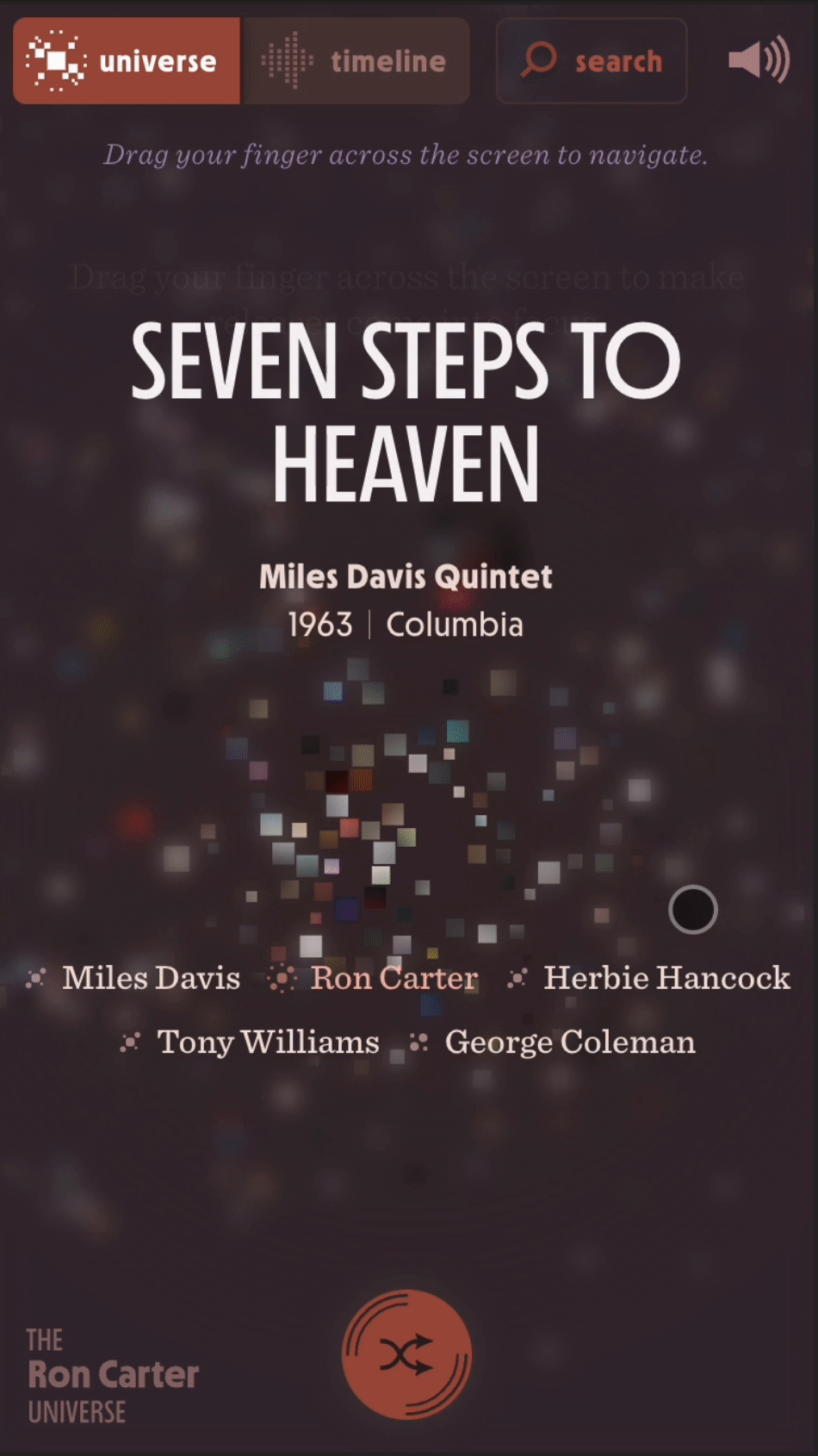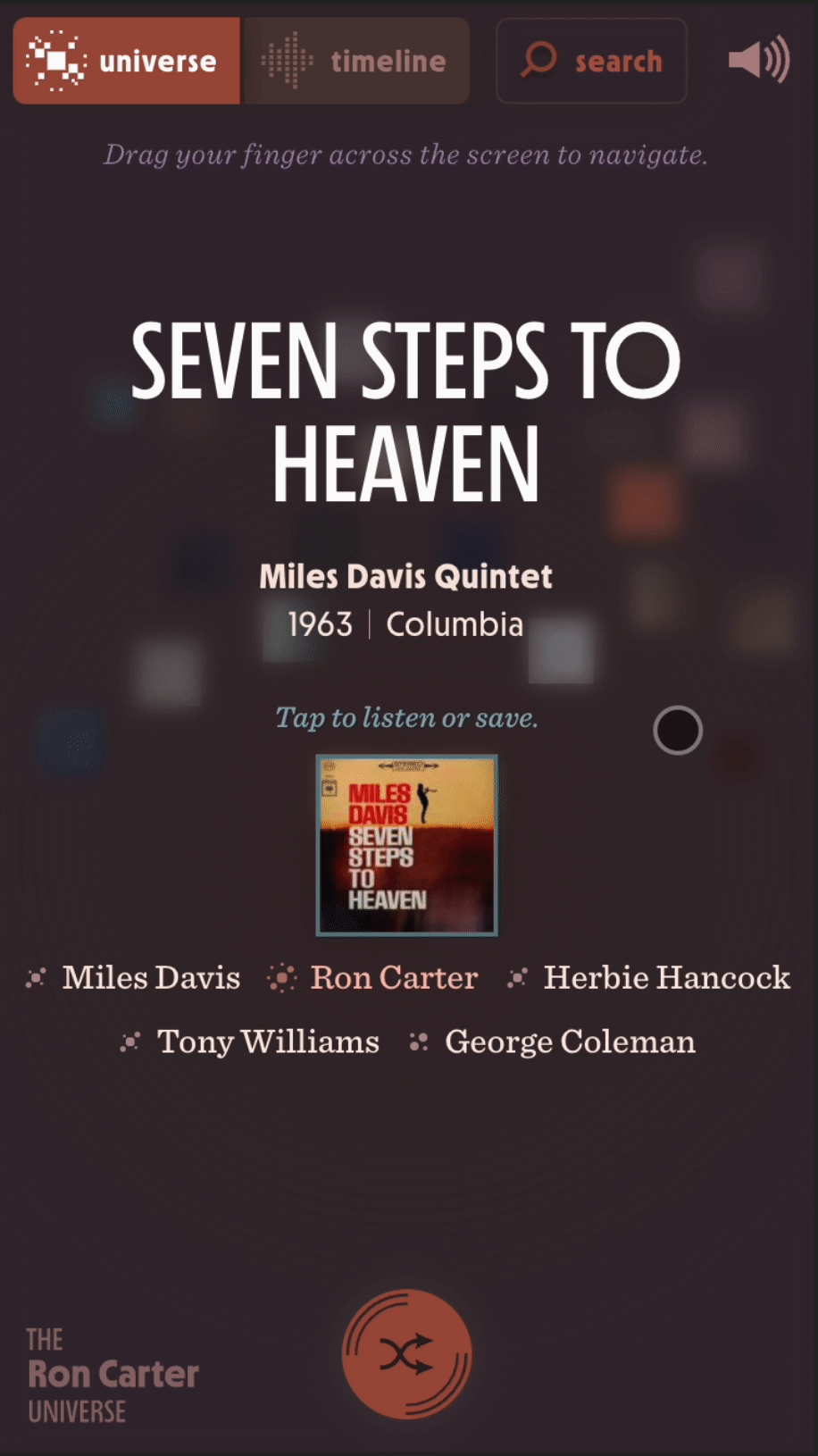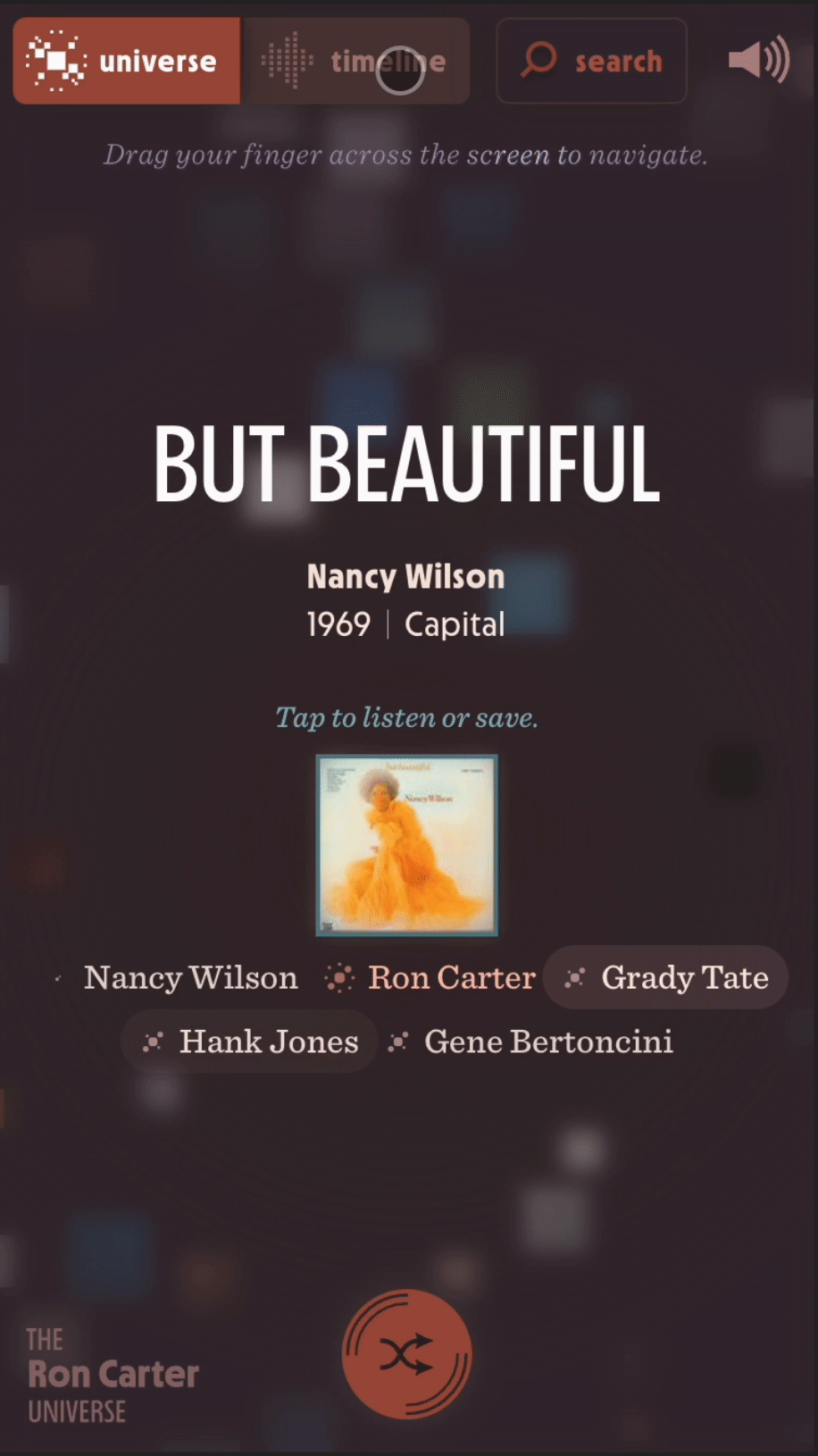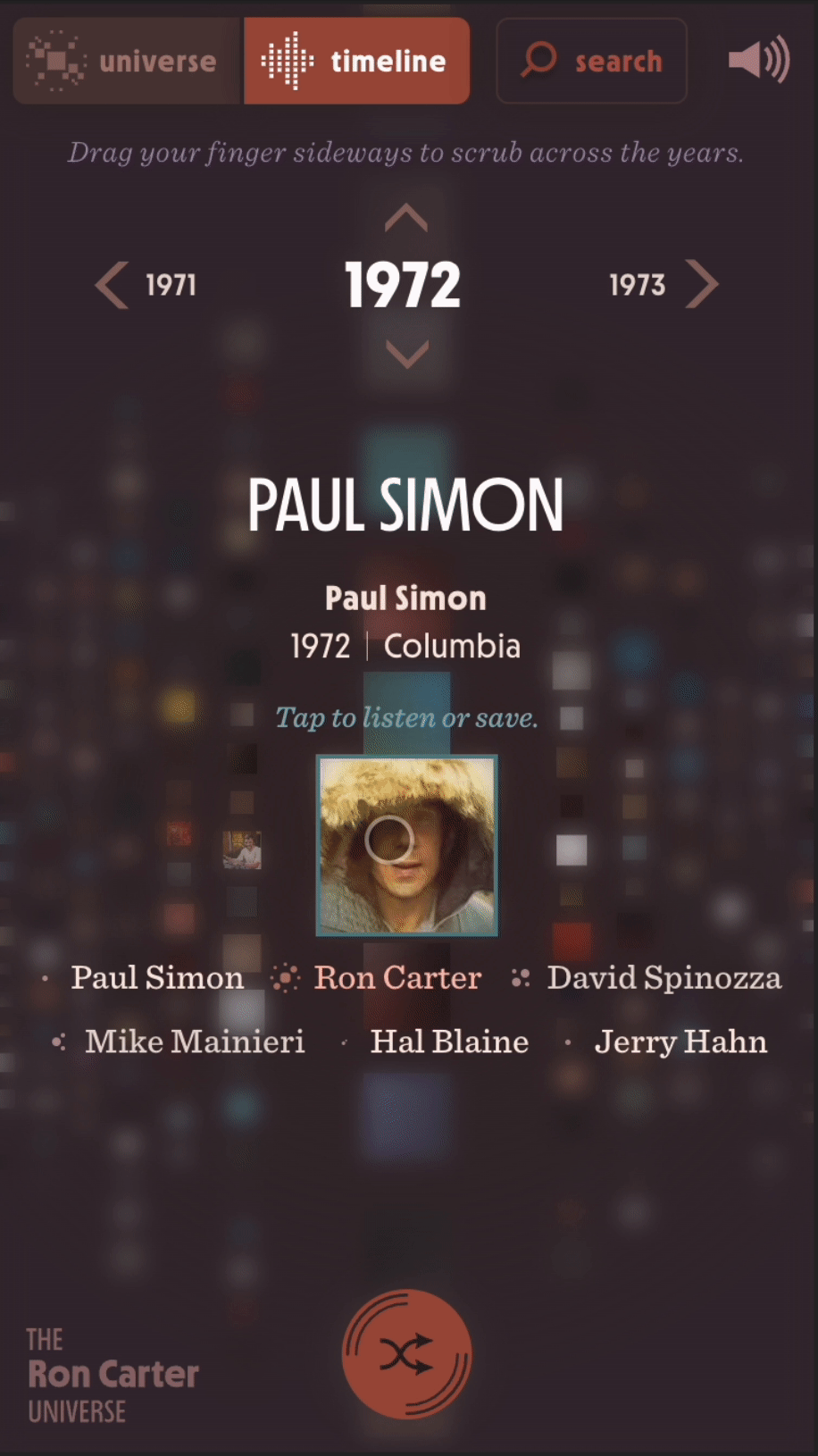

In my previous post introducing our Ron Carter Universe project, I gave some background on our experience getting to know the jazz legend and understanding how we could help present his discography to a wide audience through a meaningful, accessible interface. Our hope was to create something in which anyone, but especially Maestro, would find both joy and utility, disseminating through social media as well as physical space (tucked in Carter’s own pocket as he continues to tour across the world).




We wanted our pocket-sized interface to function like a great poster, but instead of guiding viewers through a spacious fixed layout, information had to be revealed in small chunks at a time, sequenced with intention but without too much prescription. What we lacked in surface area, we made up for with interactivity. On entering the app, you’re greeted with a picture of all 2,000+ albums laid out organically in clusters of tiny squares within the viewport, getting an overall sense of the discography’s scale, and the idea that there is some underlying structure — like a good bass line — to the sprawling landscape they comprise together. Then, you’re invited to drill right into the specificity of each release, beginning with Seven Steps to Heaven, a 1963 Miles Davis Quintet album that Maestro’s team agreed feels like an apt starting place. After that, we hand you the keys (to the…ignition? Spaceship? Time machine? Or— the aux cord?) — you’re free to poke around the musical region you landed in, or jump to a completely different place using the ‘shuffle’ button. That’s where the element of chance comes in, which we felt was important to incorporate in the experience of Ron Carter’s discography specifically, because we feel that the serendipity latent in the scope of his contributions is not only something that a spreadsheet or tracklist fails to convey, but reflective of an awe-inspiring dynamism that feels unique to him.
Chance, however, doesn’t mean random. There’s nothing random about Ron Carter’s career, as full of surprise as it is. Each tap of the shuffle button takes you to a release that offers an entry-point into an interesting, though often not-so-easy to articulate, region in his broad landscape of collaborations. These entry-points, curated with the help of Maestro and his team of course, range from releases highly relevant to his personal trajectory, to jazz history, and finally to the outliers through which he connects discrete moments in pop culture. This foundation, we hope, illuminates connections that won’t just delight jazz fans. While his influence is broader than even a connoisseur might expect within that genre itself, it also extends to far-away communities with their own sizable audiences without much apparent overlap. The connection between classical orchestra, billboard pop hits, and 90s hip-hop might not be visible on its own, but there’s a lot of joy to be found in its revelation. We want the A Tribe Called Quest fan to achieve that aha-moment when they find out Low End Theory features just one or two degrees of separation from obscure sixties Bossa Nova or nineties network television hit Twin Peaks.
In the final installment of this series on the Ron Carter Universe project, I’ll talk more about how we present Carter himself in the sprawling universe of his discography.
We’d love to hear what you’re working on, what you’re curious about, and what messy data problems we can help you solve. Drop us a line at hello@fathom.info, or you can subscribe to our newsletter for updates.